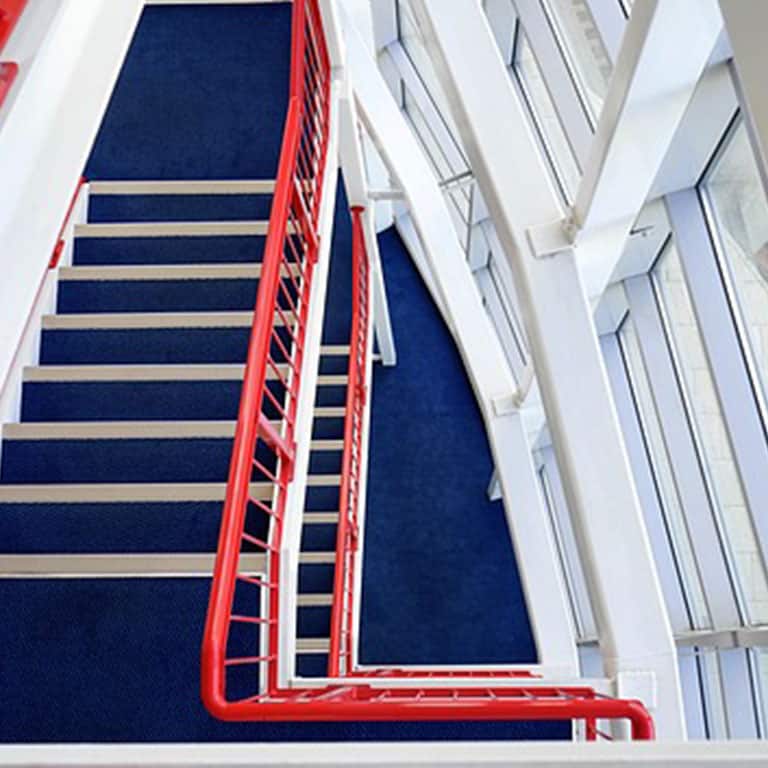The Best Ways to Remove Winter Salt From Your Floors: A Complete Guide
Winter brings picturesque snowy days, but it also ushers in a common challenge: salt and snow melt chemicals tracking inside and leaving stubborn residues on your floors. The accumulation of salt can damage various flooring surfaces, cause white stains, and create a safety hazard due to slippery patches. Properly cleaning up salt from your carpets, wood floors, cement, marble, and tile is essential to maintain the beauty and longevity of your home’s surfaces. In this comprehensive guide, offered by Titan Cleaning Services, we provide expert tips and proven methods to effectively remove winter salt residues and protect your floors.
Why Is Salt a Problem in Winter?
During winter, sidewalks and driveways are often salted to prevent ice formation and improve safety. However, this salt gets tracked indoors on shoes, boots, and pet paws, ending up on your floors. Salt residues are hygroscopic, meaning they attract moisture, which can lead to water spots, staining, and even surface deterioration over time. Additionally, salt crystals are abrasive and can scratch or damage fragile surfaces like wood or marble if not cleaned properly.
Regular cleaning is vital for prevention and maintenance, but each type of flooring requires specific care to prevent damage.
How to Remove Salt From Carpets
Carpets are especially vulnerable during winter because they easily trap salt and dirt. Here’s how to clean salt stains from carpets effectively:
1. Vacuum thoroughly: Start by vacuuming the affected area to remove loose salt crystals. Using a powerful vacuum with a beater bar ensures that most of the salt and dirt are lifted away.
2. Blot with warm water: Lightly dampen a clean cloth or sponge with warm water and gently blot the salt-stained area. Be careful not to rub, as this can push salt deeper into the fibers.
3. Use a carpet cleaning solution: Mix a few drops of mild dish soap with warm water or employ a commercial carpet cleaner designed for stain removal. Spray or apply the solution onto the stain, letting it sit for 5-10 minutes.
4. Gently scrub: With a soft brush or sponge, gently scrub the stained area, helping to loosen salt residues.
5. Rinse and blot dry: Dampen a clean cloth with water and rinse the area to remove soap and salt residues. Follow by blotting with dry towels to absorb excess moisture.
6. Allow to dry: Air drying or using fans will help the carpet dry faster, preventing mold or musty odors.
Tip: Regularly clean entry mats and use rugs at doorways to trap salt before it reaches your carpets. Consider professional carpet cleaning for deep stains and to prolong your carpet’s life.
Removing Salt From Wood Floors
Wood floors are particularly susceptible to stains and warping caused by salt moisture. Here’s how to keep wood flooring looking pristine after winter:
1. Sweep or vacuum: Remove loose salt and dirt with a soft-bristled broom or vacuum. Avoid aggressive brushing to prevent scratching.
2. Damp mop: Prepare a solution of warm water with a small amount of mild dish soap or specialized wood floor cleaner. Use a damp (not wet) microfiber mop to clean the area.
3. Wipe with a clean cloth: After mopping, use a gently damp cloth to wipe away any remaining salt particles and cleaning solution.
4. Dry thoroughly: Use a dry microfiber cloth or towel to thoroughly dry the floor, preventing water damage or warping.
Note: If salt stains have caused discoloration or pitting, you may need professional refinishing or polishing. For ongoing protection, apply a wood floor sealant or protective wax.
Cleansing Salt From Cement Floors
Cement or concrete floors are highly durable but can still suffer from salt buildup, especially in garages, basements, and outdoor patios. Follow these steps:
1. Sweep or vacuum: Remove loose salt and debris.
2. Mop with warm water and mild detergent: Use a mop dipped in a solution of warm water and a gentle cleaner or specialized concrete cleaner.
3. Scrub stubborn spots if necessary: For thick salt residues or stains, scrub with a stiff-bristled brush.
4. Rinse: Follow with clean water to remove residue.
5. Dry the surface: Use towels or air blowers to ensure the area dries thoroughly, reducing slip hazards.
External Resources: For deep cleaning or sealing concrete surfaces, consult concrete care tips from the {industry resource}.
1. Sweep or vacuum
Start by removing loose salt crystals with a soft-bristled broom or vacuum. Be gentle to avoid scratching the marble surface.
2. Use a pH-neutral cleaner
Prepare a solution of warm water with a pH-neutral marble cleaner or a few drops of mild dish soap. Avoid acidic or alkaline cleaners, as they can damage marble.
3. Damp mop gently
Use a microfiber mop or soft cloth to clean the surface, ensuring the cloth is only damp, not soaked. Clean in small sections to prevent streaking and residue buildup.
4. Rinse with clean water
Use a fresh damp cloth with plain water to rinse away any remaining cleaning solution.
5. Dry immediately
Dry the marble thoroughly using a soft linen or microfiber towel. Excess moisture can lead to water spots or etching.
6. Handle stubborn stains carefully
If salt stains have left etch marks or discoloration, consider consulting a professional for honing or polishing to restore the marble’s luster.
Pro Tip: Seal your marble floors periodically with a quality marble sealer to provide a protective barrier against winter salts and stains.
How to Clean Salt From Tile Floors
Tile floors, whether ceramic, porcelain, or natural stone, are popular in entryways and kitchens. Salt residues can be easily cleaned if you follow these steps:
1. Sweep or vacuum thoroughly
Remove loose salt and dirt with a broom or vacuum.
2. Mop with warm water and a gentle cleaner
Use a soft mop dipped in warm water mixed with a mild tile cleaner or dish soap. Be sure to clean grout lines carefully using a soft brush.
3. Focus on grout lines
Salt can accumulate in grout, so scrub grout lines gently with a toothbrush or small brush to remove residue.
4. Rinse thoroughly
Go over the area with clean water to wash away any remaining salts or cleaner.
5. Dry with a microfiber cloth
Dry the floor completely to prevent water spots and slipping hazards.
External Resources: For deep cleaning or sealing tile, visit tile and grout maintenance tips from industry resources.
How to Clean Salt From Vinyl Floors
Vinyl floors are durable and resistant but can still sustain damage from salt if not cleaned properly:
1. Sweep or vacuum
Remove loose salt to prevent scratching.
2. Mop with warm water and mild soap
Use a soft mop or cloth dampened with warm water and a gentle cleaner, avoiding abrasive or acidic substances.
3. Avoid harsh cleaners
Chemical cleaners like bleach or ammonia can discolor vinyl. Choose pH-neutral or manufacturer-recommended products.
4. Dry immediately
Use a towel or dry mop to quickly remove excess water and salt residues.
5. Check for damage
Inspect for any cracks or peeling caused by salt or cleaning products. If damage occurs, consult a professional for repairs.
Additional Tips for Winter Floor Care
- Use entry mats and rugs: Place outside and inside door mats to trap salt and snow melt chemicals, reducing indoor residue.
- Regular cleaning: Frequent mopping or vacuuming during winter prevents salt buildup.
- Protect delicate surfaces: Seal or polish wood, marble, or natural stone floors before winter to provide added protection.
- Professional help: Consider annual or biannual professional cleaning for deep maintenance and sealing. Visit Titan Cleaning Services for expert assistance.
Final Thoughts
Winter’s snowy season enhances outdoor beauty but can pose significant challenges to your home’s flooring. Properly removing salt and snow melt residues ensures your floors stay beautiful, durable, and safe. Using the right cleaning methods for each surface can prevent damage and prolong their lifespan.
At Titan Cleaning Services, we specialize in comprehensive cleaning solutions tailored to your needs, including tackling winter salt stains. Whether you need professional carpet cleaning, floor refinishing, or sealing services, our team is ready to help ensure your home stays pristine all winter long. Visit us at Titan Cleaning Services for more information or to schedule a consultation.
Embrace winter with confidence, knowing your floors are protected from the damaging effects of salt and winter chemicals. Stay safe, and keep your floors shining!













